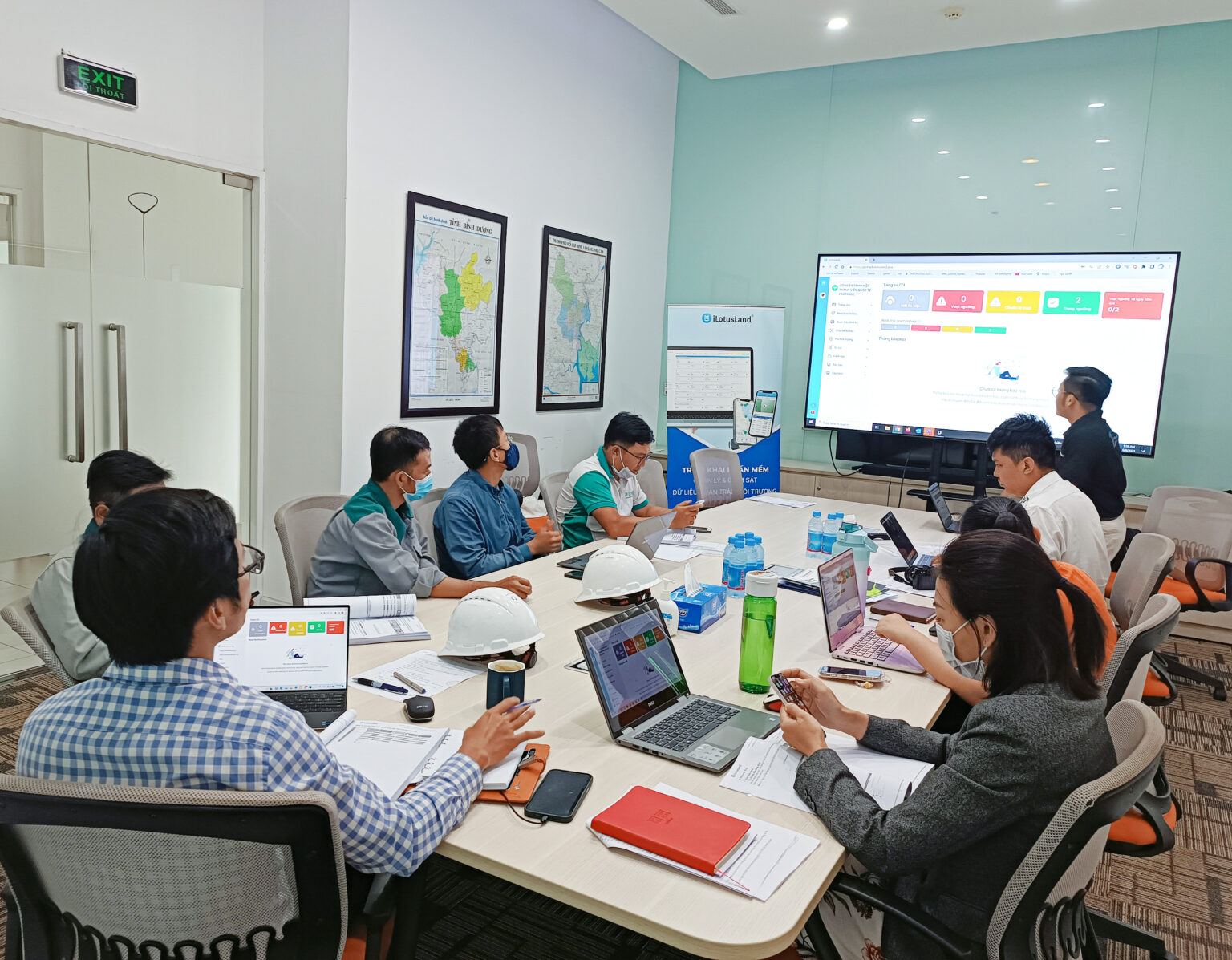In tandem with the rapid development of science and technology is a significant decline in environmental quality. Research and production activities contribute to environmental pollution in soil, water, and air, diminishing the quality of life and public health. Therefore, businesses need to deploy measures to address and monitor the environment for corrective actions. Environmental monitoring software aims to measure parameters in the environment through sensors and data collection devices. It ensures that environmental parameters in monitored areas are consistently controlled. The software plays a crucial role in managing the environment to control and systematically store data securely.
5 Reasons to Use Environmental Monitoring Software
1. Remote Control Capability
The most notable feature of environmental monitoring software is its ability to remotely access environmental data. The system provides data specific to the monitored environment, connecting from any internet-connected device.
The most notable feature of environmental monitoring software is its ability to remotely access environmental data. The system provides data specific to the monitored environment, connecting from any internet-connected device.
The software also provides environmental data monitoring from both the main office and branches, particularly beneficial for businesses with multiple branches and offices in different locations.

2. Instant Notifications
Values, correct/incorrect ranges, and alert conditions for specified parameters are determined during the environmental monitoring system installation. The severity of alerts, communication types, and relevant contacts in alert states are also defined.
In the event of immediate environmental changes, the system provides instant calls/alarm signals in emergency situations and takes prompt action. It notifies contacts via email, messages, and calls.
This enables businesses to easily intervene in emergency situations by complying with legal regulations.
3. Cost and Resource Savings
Waste and energy are controlled by data management software, helping save energy and use it efficiently. Additionally, when waste is controlled and managed appropriately, businesses can reduce significant costs for excess waste processing.
Moreover, a large workforce is required to monitor, control, and report all environmental parameters manually. The environmental monitoring system performs these activities effortlessly and independently using sensors and data collection devices. It optimizes human resources while maintaining high efficiency.

4. Enhanced Productivity
Smart monitoring systems automate tasks with high precision, enhancing productivity for the environmental monitoring process.
Since environmental parameters negatively affect production and reduce product efficiency, environmental monitoring software ensures continuous control in production, guaranteeing increased product efficiency.
5. Compliance with Legal Regulations
Regular environmental monitoring reports, now known as periodic environmental monitoring reports, are a short-term environmental quality assessment form at the facility and periodic reporting to competent authorities, such as environmental protection agencies, departments, and ministries.
Therefore, businesses need to carry out these reports as a basis to evaluate the impact of pollution sources, helping state agencies monitor the environmental quality of the area.
The process of preparing periodic environmental monitoring reports is as follows:
-
-
Evaluate the current environmental status, collect data on facility activities, natural conditions, climate, geology, and relevant socio-economic factors.
-
Identify pollution sources.
-
Conduct air/soil sampling within and around the factory, wastewater, etc., then measure and assess the impact of production, business, and service activities on the environment.
-
Commit to addressing issues, propose specific corrective measures and timeframes, and commit to operating and regularly implementing treatment measures to minimize pollutants according to current environmental standards and regulations.
-
Submit the report to the competent authority for review and resolution of the periodic environmental monitoring report: Department of Natural Resources and Environment, environmental departments in districts, and provinces.
-

iLotusLand Data Monitoring Software
iLotusLand Environmental Monitoring Management Software is a solution for measuring, synthesizing, and reporting measured indicators from monitoring systems while controlling and analyzing environmental monitoring data using IoT applications. Based on the acquired data, businesses can make intelligent decisions in monitoring and managing environmental waste. The measured indicators are continuously and quickly reported in real-time. Users can connect and receive data from various monitoring stations through a single environmental management software.

Especially through the software, users can control the monitoring system by controlling automatic sampling, capturing real-time information from camera signals, and interacting with the locations of stations on the map. With applications available on the website and mobile phones, iLotusland For Environment aims to assist businesses, industrial parks, factories, and government agencies in conveniently and promptly monitoring the quality of emitted sources.
Contact us for the latest information on environmental management software!
| View more blogs: | Update iLotusLand For Environment software Ver 3.11 |
| Top benefits of using automatic periodic reports with iLotusLand | |
| The importance of environmental monitoring for enterprises today |




